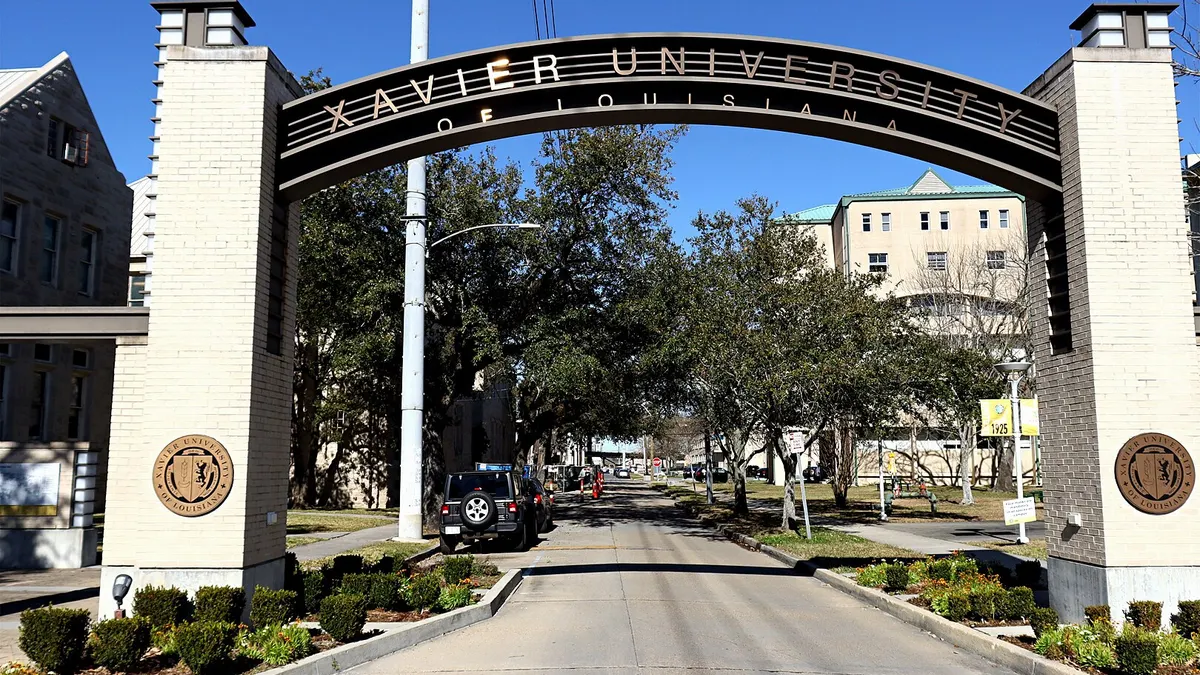Dive Brief:
- Non-elite colleges in the U.S. largely aren’t making big enough moves to become financially stable in the face of declining enrollment, rising costs and wavering government funding, according to a new report from consultancy EY.
- It recommends college leaders consider radical approaches to improve their finances, including merging with other institutions, investing in digital learning and cutting academic programs that lose money.
- To create the report, EY worked with Times Higher Education, a British higher ed publication, to analyze the sector’s financial data and interview 11 university leaders in the U.S., Canada, the U.K. and Australia. Although non-elite institutions in all four regions face similar financial challenges, the report pointed out that in the U.S., college mergers and closures accelerated over the last two decades.
Dive Insight:
As competition for students heats up, colleges are struggling financially just to maintain the status quo, according to the report, which didn’t provide a precise definition of non-elite institutions.
“Across the globe, universities are selling non-core assets or shrinking their footprints (physical or academic) to fund ongoing costs — an obviously unsustainable position,” the authors wrote.
U.S. colleges in particular are dealing with challenging demographic trends. A separate analysis from EY-Parthenon based on financial metrics and student outcomes found that 20% of colleges in the U.S. were at financial risk in 2020.
Some college leaders told researchers of the new report that they see digital transformation as a way to increase their revenues in the future. They believe delivering their programs digitally could help reach new markets and strike agreements with employers to upskill their workers.
However, they also note these types of initiatives require heavy investments.
“Digital transformation is expensive but it’s a price we have to pay because we have to get into that space,” Joseph Helble, president of Lehigh University, told the researchers.
Not all colleges have the necessary resources to refurbish or digitally transform their campuses. Some leaders voiced that they had to tap into institutional reserves for other reasons at the same time they wanted to invest in these sorts of projects.
“If dollars through the door fall then universities start to struggle, their reserves get spent, and then they can’t pivot or invest,” Daniel Greenstein, chancellor of Pennsylvania’s State System of Higher Education, told the report’s researchers.
The report recommends that mid-tier colleges go beyond the typical strategies institutions use to improve their financial footing, such as debuting new academic offerings or increasing revenue from donations.
For instance, colleges should analyze which of their programs are making money and consider cutting those operating at a loss, according to the report. They may also need to sunset offerings that are either too niche or that are so generic that they duplicate programs at competitor colleges.
“No university leader enjoys the prospect of cutting programs,” the authors wrote. “But some understand it may be necessary, offering the financial benefit of removing an ongoing drain on the institution’s revenue position.”
They also suggest colleges look to cut costs through achieving economies of scale, including by pursuing mergers and acquisitions. Consolidation is becoming more common in the U.S., “hitting a high of 25 mergers in 2018,” according to the report.
“Chief executives and boards rarely want to give up their positions or a cherished brand,” the authors wrote. “However, M&A is now much more present as part of strategy discussions on campus among boards and leaders instead of being a taboo topic.”









